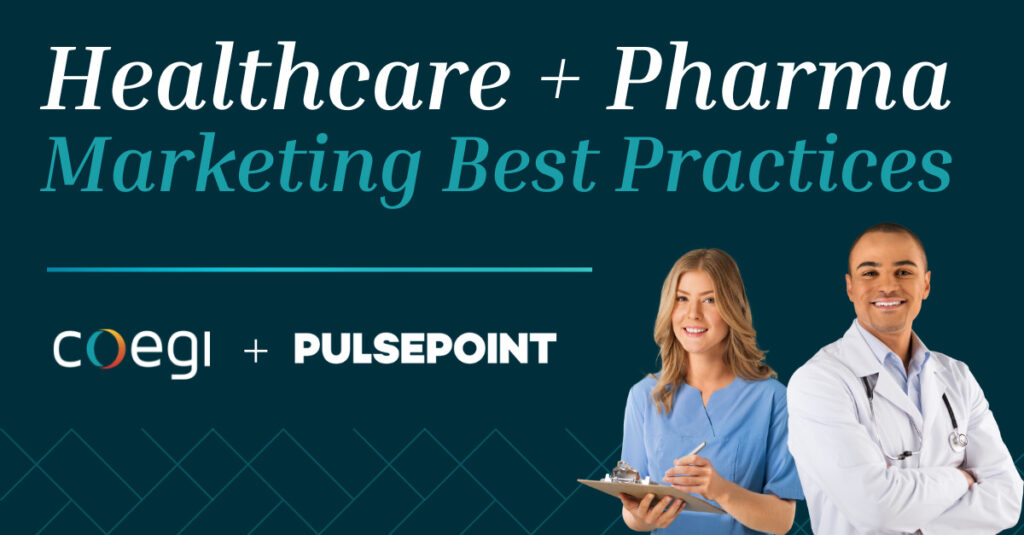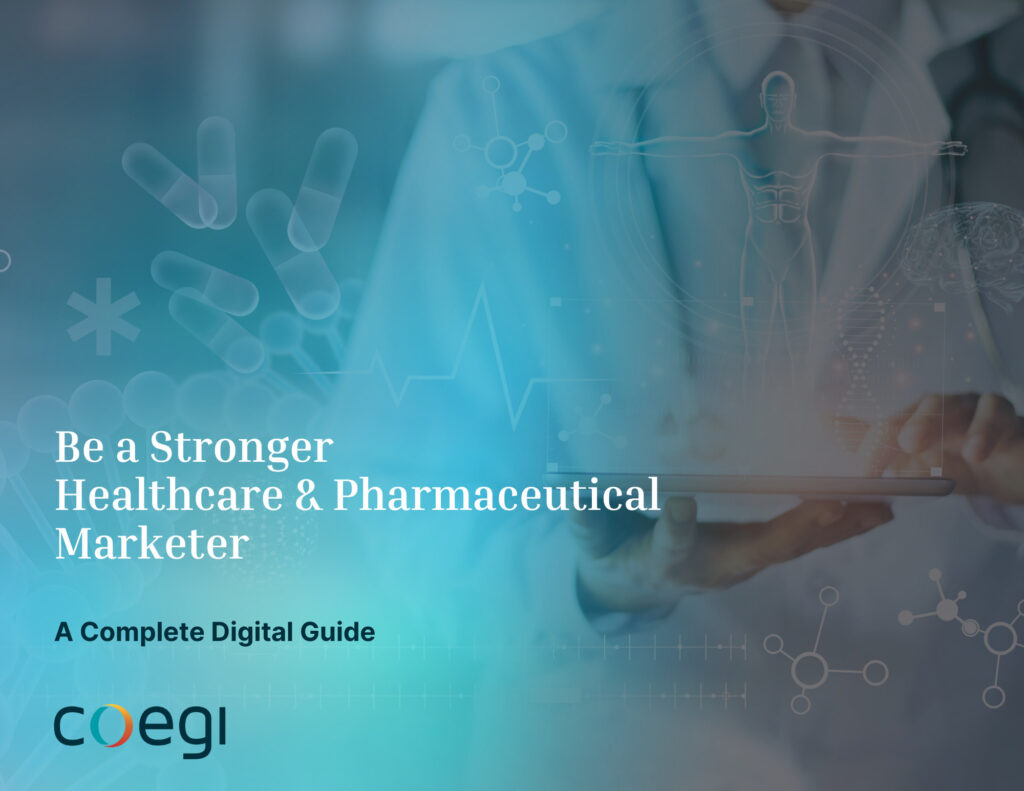A Disrupted Ecosystem Leads to New Healthcare and Pharmaceutical Marketing Opportunities
The Covid-19 pandemic accelerated a large shift toward digital technologies in the healthcare landscape. For example, the acceptance of telehealth practice rose to 71% post-pandemic, despite very low adoption prior. As AI tools and telemedicine create efficiencies and digitize patient and healthcare provider communications, marketing efforts need to follow a similar trajectory.
Similarly, visitation restrictions forced greater reliance on marketing channels rather than one-to-one sales meetings. This provides a massive opportunity for healthcare and pharma marketers to adapt and create a competitive advantage.
How to Build Successful Patient Relationships
Patient-centric healthcare and pharmaceutical brands must gain loyalty through consumer relationships. Loyalty is at a historic low while openness to change and preference for convenience are soaring. 62% of consumers expected their preferred brand for healthcare to change post-pandemic. Additionally, 80% of patients said they’d switch providers solely for “convenience factors”.
Marketing strategies must be customer-centric to capture loyalty. In today’s healthcare ecosystem, that requires leaning into omnichannel, digital strategies and leading with empathy.
Patient Targeting Strategies for Health & Pharma Brands
Despite the challenge of compliance and data privacy laws, brands still have a variety of ways to target patients by using first and third-party data as well as machine learning to identify and segment consumers who are receptive to healthcare advertising or are actively researching treatment options.
Local & Geo-Targeting
Hospital systems and healthcare practices should lean heavily into local targeting to reach their core audiences. These campaigns can drive location visits, but should also increase awareness and education. 1 in 4 people surveyed said they do not know enough about local health systems to make an informed choice.
With data partners, pharmaceutical brands can target programmatic buys to specific zip codes that over-index for a particular condition. Using anonymous provider prescription data, data can be matched to zip codes with the highest lift in specific prescriptions. You can even map it to these households via IP addresses. This enables omnichannel online targeting to reach healthcare consumers through display, video, native, and social media channels.
Condition-Based Targeting
Use third-party data providers to access unique healthcare segments. This anonymous data is not subject to some of the strict HIPAA guidelines, as it cannot be tied to PII. This allows you to reach your relevant audience at scale without media waste.
Interest Group Targeting
Interest targeting is a great way to reach patients as well as families and caregivers who are also interested in a specific condition or topic. This expands reach to the key decision-makers in the healthcare process. Data providers often define “interest” by what content consumers are reading online.
Retargeting
By placing small pieces of code on a website, known as pixels, brands can retarget website visitors with programmatic ads. You can also build lookalike audiences to expand the retargeting pool. In instances where the topic or condition is considered sensitive, lean on the other tactics above to reach your key audiences.
Key Channels for Healthcare and Pharmaceutical Marketers to Reach Patient Audiences
Local and Paid Search
Search engine is often the first touchpoint in the patient journey as they begin researching a symptom or diagnosis. Establish your brand as a resource with relevant, helpful content through both paid and organic search.
Local search is impactful when patients are looking for a nearby healthcare location. Providers should have mobile-optimized websites, complete Google business profiles, customer reviews, and relevant content for local optimization.
Social Media
Use the power of social media to build brand trust and authenticity. These platforms are a great way to reach patients in a more personal environment where they are active daily.
Most social platforms offer demographic, interest and behavioral targeting parameters. There is also an emerging trend of HCPs becoming popular creators on channels like YouTube, Twitter and TikTok. This organic influencer content can be highly effective, especially if you amplify it through paid social.
Programmatic Display
Today, patients of all ages are consuming media digitally and using mobile devices to find healthcare information. In 2020, display was the fastest-growing format for healthcare and pharma ad spend. Mobile optimization is a key adaptation for advertisers moving forward. Over 80% of smartphone-using patients use them to identify or interact with physicians.
Contextual display targeting places ads next to relevant, trustworthy content when consumers are in the appropriate mindset. This can be done with keyword matching for specific web content or by running PMPs on specific healthcare publications.
Native Ads
Native ads match readers’ interests with relevant content and generate higher brand engagement. You can repurpose high-performing social ad content and target these ads to the audience segments of the campaign. Match these ads with contextually relevant articles to align with health content that would demonstrate how your brand or facility could best serve that individual.
Programmatic Video
Video Ads capture user attention on sites or social media channels with engaging motion and sound based messaging. Use quality video to:
- Show brand personality and bring messaging to life
- Show your product/service in action
- Optimize for mobile placements
Connected TV
Television streaming times are soaring. This is especially true for the 55+ age range, a core healthcare demographic, who also make up the highest proportion of CTV viewers.
The high-impact video content and addressability of CTV ensure ads reach relevant audiences. Using specific healthcare patient and provider audiences on CTV buys reaches high-value, addressable segments. Cross-channel integration platforms can ensure you reach the right audience with the appropriate frequency, thus optimizing omnichannel strategies.
“CTV is an untapped space eliminating barriers from a cost-to-market perspective. TV is now an accessible market for pharmaceutical players.”
Colin Duft, Coegi Account Strategy Director
Measuring Healthcare and Pharmaceutical Marketing Campaign Results
Using Full-Funnel Media Metrics
To measure campaign performance, it’s critical to understand how all your KPIs work together. We start by building a custom measurement framework factoring in multiple KPIs correlated to core business goals. Think outside the box of typical stats such as CTR, CPM and CPC to find more meaningful ways to track and attribute success.
When media metrics do not answer your business questions, consider adding advanced measurement tactics. These data points will provide a more robust view of overall performance and marketing’s impact on your true business goals.
Advanced Measurement Tactics for Healthcare Brands
Healthcare brands with physical locations may find it difficult to measure the effects of digital marketing on in-person traffic. Medical device and pharmaceutical brands can likewise struggle to measure the results of in-person sales teams plus both on and offline marketing. In these instances, advanced measurement studies can help provide answers and display incremental lift in brand awareness, sales, or traffic.
- Foot traffic lift studies can be highly informative for hospitals or retail health brands. They provide online to offline attribution for campaigns aiming to drive consumers into physical locations. They use mobile location data to quantify the impact of media campaigns on incremental increase in visitation.
- Brand lift studies can be effective for pharmaceutical brands to measure KPIs such as brand favorability, brand affinity, or ad recall. These can gauge success for omnichannel campaigns on branding goals.
Starting a Conversation with HCPs: Strategic Targeting, Channels & Measurement
Ad Targeting for Healthcare Providers
Healthcare providers are relatively easier to target than patient segments. There is publicly available information and fewer privacy restrictions. However, there are occasionally some challenges with achieving scale as well as higher costs. Regardless, brands can reach HCPs across the wide range of content they consume to increase opportunities for engagement.
ID-Based Targeting
National Provider IDs are personal identifiers for specific healthcare providers including their practice location and specialty. Utilizing this data set via demand-side platforms allows for compliant, 1:1 HCP targeting across multiple channels and devices.
Geo-Targeting
Brands can also use NPI numbers to target relevant practice locations for particular physicians or specialties. By targeting a geo-radius around POC locations with high volumes of particular diagnoses or treatment types, you can remain compliant while also reaching your target audience.
Retargeting
Re-engage previous HCP website visitors with highly relevant creative. This tactic helps build consideration, with the ultimate intent to continue engaging based on prior actions.
Contextual Targeting
Contextual targeting tools can look at categories, keywords, and tags on web pages to deliver highly relevant programmatic content. At Coegi, we map these to the National Library of Medicine MeSH Taxonomy to ensure the most relevant terminology is applied to our digital media.
Rx and Dx Targeting
Through data partnerships, brands can target NPI numbers of providers who prescribe certain prescription codes. Likewise, brands can target by diagnosis using ICD-10 codes to find their core provider audience.
Key Digital Marketing Channels to Reach Healthcare Providers
Endemic Display
Reach healthcare providers on the key sites they visit for the latest trends and best practices in their field. These endemic sites are a more premium placement due to higher prices and lower supply.
HCP Network: Doximity
Doximity is the leading social networking site specifically for healthcare providers. There are various ad placement options including sponsored content or in-feed ads. This can be a particularly helpful channel for new or emerging brands. It’s a great tool to educate and inform physicians about a new product offering.
Paid Social
Social media advertising helps reach HCPs outside of their professional environment. Use data providers to access ailment clusters and physician databases available for targeting on social and search.
Programmatic Display
Display is the fastest-growing ad format in healthcare and pharma. Programmatic ads allow healthcare marketers to promote relevant information to HCPs outside the limitations of endemic websites. Also, banner display ads provide an easy format to drive traffic to specific website landing pages.
Paid Search
Similar to patients, practitioners also rely heavily on online resources to find new techniques, products, and information relevant to their practice. Outside of medical journal websites, providers prefer to receive communication from companies via search engines.
Measuring HCP Marketing Campaign Results
At Coegi, we firmly believe all campaign spend can be accurately measured. When advertising to HCPs, the one-to-one addressability of some tactics allows for clearly traceable marketing ROI. However, other tactics can have less direct attribution toward objectives.
In these instances, advanced measurement studies can help provide answers, explore correlations, and display incremental lift in metrics such as brand awareness, brand affinity and sales lift.
Advanced Measurement Tactics
Brand lift studies can gauge success for omnichannel campaigns on brand-based goals. Awareness surveys with key practitioner groups can inform how a brand is perceived and the level of recognition or ad recall achieved within a target audience.
Ready to level up your healthcare advertising? Schedule a discovery call with our business strategy team to get started today.





